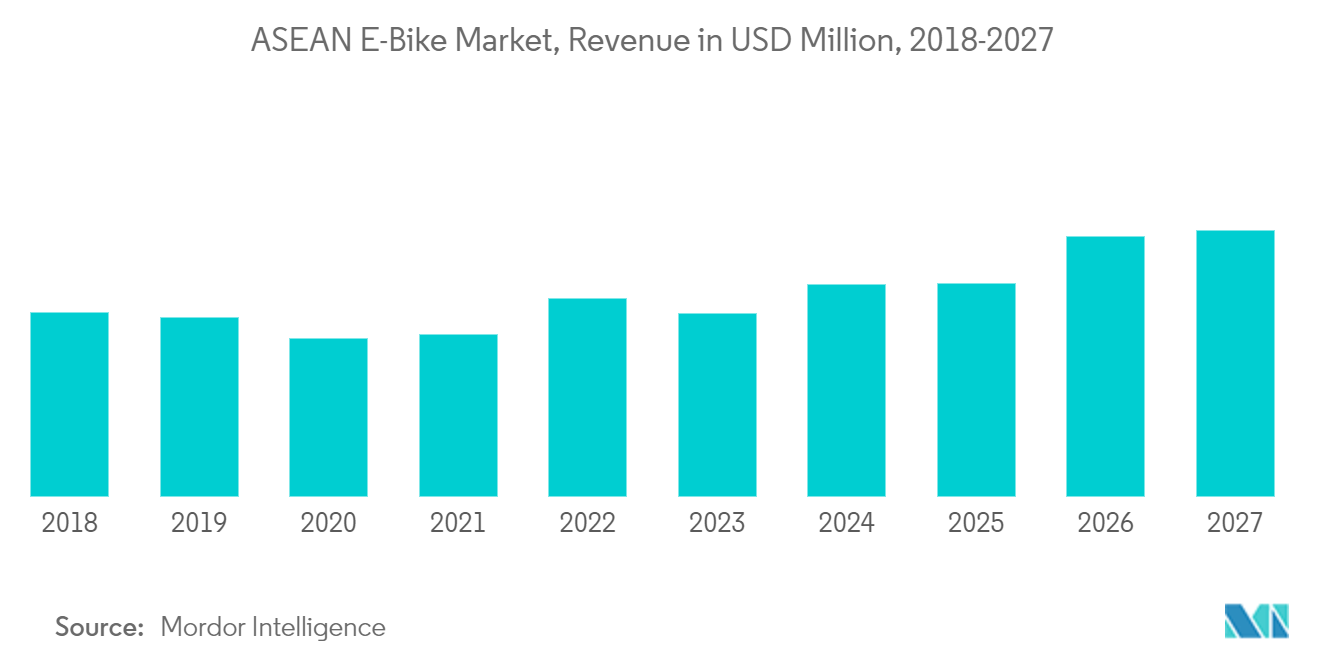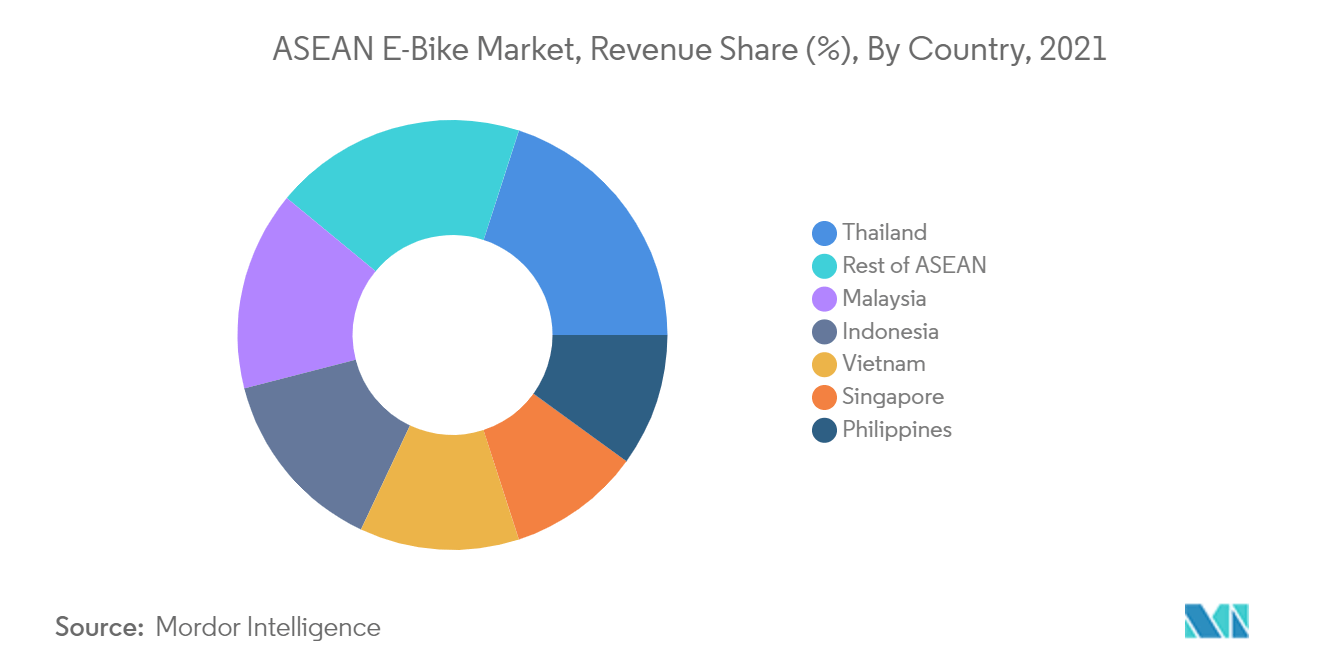Market Trends of ASEAN E-Bike Industry
This section covers the major market trends shaping the ASEAN E-Bike Market according to our research experts:
Expansion of Key Players in the Region is Driving the Market
There are already a number of established manufacturing clusters in ASEAN. Electronics are found in Malaysia and Vietnam, packaged foods and automobiles in Thailand, petrochemicals and machinery in Indonesia, packaged foods and apparel in the Philippines, and semiconductors, biopharmaceuticals, and aerospace components in Singapore.Singapore has been a hub for high-value R&D-intensive industries and trade-supporting services like finance and logistics, while the emerging economies of Southeast Asia have long been destinations for manufacturers seeking abundant low-cost labor.
The ASEAN Economic Community (AEC) has made significant progress toward regional economic integration, the establishment of a common market, and the sharing of a production base.Manufacturing exports from ASEAN's ten member states increased at an average of 5% annually from 2015 to 2019, exceeding the global average of 3%2. While labor-intensive assembly work has led manufacturing growth, higher-value goods have also experienced strong export growth.
Foreign Direct Investment (FDI) has been a significant contributor to the expansion of manufacturing in the region.Traditionally, the US, EU, and Japan have been the largest FDI sources of FDI. However, since 2015, investment from ASEAN economies has increased significantly as manufacturers have sought new low-cost locations and attempted to penetrate ASEAN markets more deeply.
As Chinese electric bike companies look to expand into international markets, Southeast Asia, which has similar cultures and market conditions, has emerged as their primary focus.In particular, the costs of these labor-intensive industries are also rising rapidly in tandem with the rapid rise in labor costs in China, which significantly reduces businesses' profit margins.Because labor costs in Vietnam, Laos, and Cambodia are only half to a third of what they are on the Chinese mainland, or even less, these businesses are moving production to increase their profit margins. For instance,
- In August 2021, Giant Bicycles announced that it will invest USD 48 million in a new manufacturing facility in southern Vietnam. Located in Vietnam's Binh Duong Province, the new Giant plant is expected to begin production during the second half of 2023

Thailand is Dominating the Market
The e-bikes have found their way to the ASEAN region and is now prospering due to the tourism business in major countries. These electric bicycles can aid bikers with pedaling, which is particularly beneficial for long distances and difficult uphill climbs. Longer distances, while thrilling for many, might be intimidating for others, particularly newer or inexperienced riders. The e-bike has started to fill a unique void in the adventure tourism business in the region. Longer-distance day trips and demanding multi-day bicycle tours are no longer reserved for fitness freaks, thanks to e-bikes. The possibility of using e-bikes instead of traditional bicycles on cycling tours allows more tourists to participate in cycling tours than ever before, increasing the number of prospective consumers in the country.
Due to their environmentally friendly characteristics, e-bikes have gotten a lot of press in recent years. Following the coronavirus epidemic, e-bike sales in Thailand have soared to new heights, and this trend is projected to continue in the near future, especially in the luxury class. The tremendous rise is due to the great adaptability of e-bikes, as well as rising consumer awareness of environmental issues. E-bikes appear to fit in nicely for leisure, fitness, short-distance commuting, avoiding traffic, or simply saving money on gasoline. With the coronavirus pandemic, e-bikes have risen in popularity as a viable alternative to public transit.
To promote the usage of e-bikes in the country, the government have been actively taking measures to attract foreign e-bike manufacturers to set up their bases in Thailand. For instance,
In April 2022, The Board of Investment (BoI) authorized investment privileges for electric-bicycle manufacturers, as well as increased privileges for electric-motorcycles and e-tricycles. The BOI has also created a new category, No. 4.28, to produce electric bicycles. If specific requirements are satisfied, projects in this category will be eligible for a three-year CIT exemption plus an extra one-year exemption. The production of E-bikes, the fabrication or procurement of electric batteries, and a management strategy for old batteries are all required in this category.
Thailand was severely impacted by the COVID-19 pandemic; however, the government's early and tough containment measures successfully flattened the transmission curve in 2020. Effective containment, limited public gatherings, limited use of public transit, and a multifaceted economic package all helped to mitigate the damage. Furthermore, COVID-19 generated several prospects for electric mobility, as people are increasingly interested in a transportation option that can assure social distancing, hence reducing disease spread. Electric two-wheelers which include e-bikes, e-scooters and e-motorcycles, compete with public transit options such as buses, trains, and trams. As a result, throughout pandemic, the demand for electric scooters and motorcycles in the kingdom has increased. In 2021, approximately 5233 electric motorcycles were newly registered in Thailand increased from 4935 units in 2020
The Thailand market is still in its infancy, but it is being propelled forward by non-governmental organizations that are encouraging and funding the adoption of electric vehicles. Electric motorcycles and scooters are making a significant effect in Thailand, where two-wheelers are typically the dominant method of transportation. They are considerably less expensive than vehicles about 84,000 Thai Baht or USD 2,500 for these electric scooters in Bangkok and do not rely on a distributed charging network.
The first- and last-mile categories are predicted to develop faster in Thailand's market throughout the forecast period. This will be mostly due to expanding consumer demand for shared mobility services, rising disposable income, and government worries about the country's environmental pollution. The government is creating a solid infrastructure and road network, as well as deploying more electric vehicles for first- and last-mile connection, to reduce pollution levels and the rate of personal vehicle ownership. Electric bicycles are being tested with on goal to improved bike sharing in the future.

